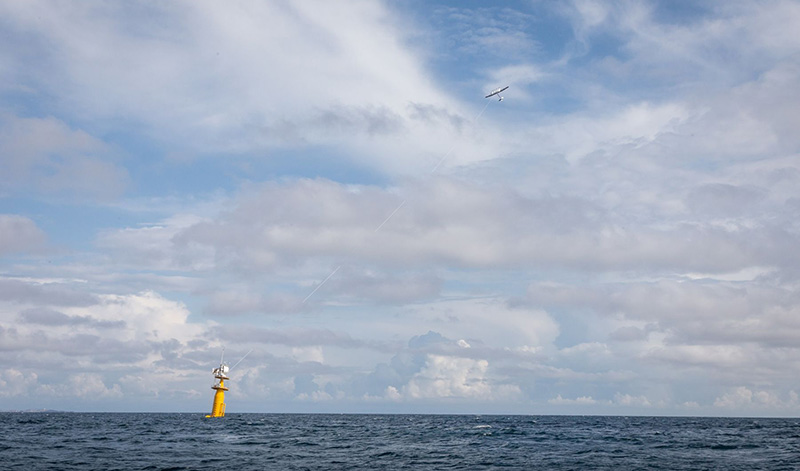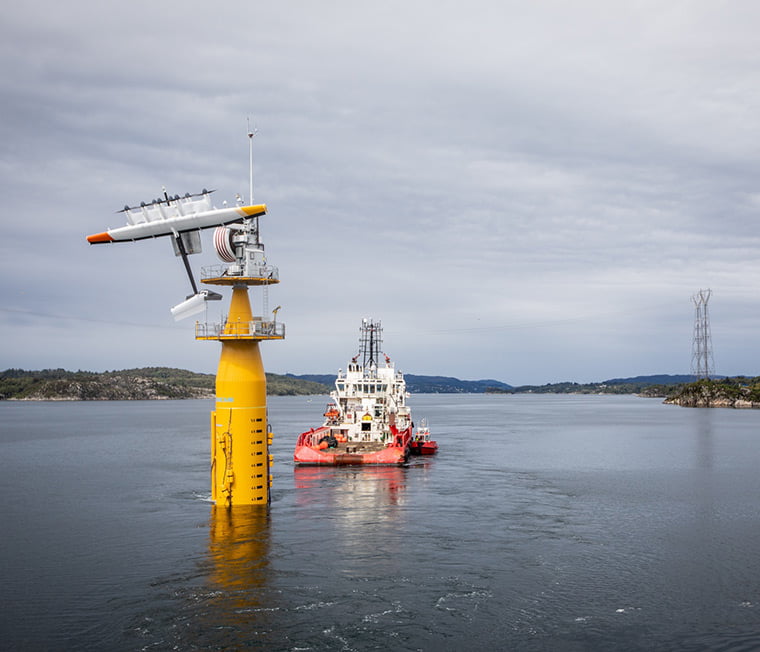
The Alphabet-subsidiary Makani completed a test off the Norwegian coast. It is hoped the airborne turbine could be used in some of the world's deepest waters.
The Alphabet-owned Makani with support from Shell tested a flying wind turbine off the coast of Norway this week. The carbon-fibre kite tethered to a buoy aims to test the feasibility of deep water power generation far offshore.
There had been concerns about how the device would deal with the salt water environment, but the team were pleased with the results.
“The tests we conducted last week proved that it works. That’s the giant step forward. Now we’ll come back to adapt the systems for the overall marine environment that we’ll want to commercialize in,” said a company spokesperson.

How the turbine works
The airplane-like kite completed its first demonstration 10km off the coast of Norway in water around 220 metres deep. The device measures around 26 metres across and has eight rotors attached to it. They spin in the wind, generating electricity.
The machines are designed to take advantage of more reliable wind currents at higher altitudes. The kite is secured to the buoy by a cable and flies in a loop. It required less material to install than a traditional offshore wind turbine, with the added advantage that it can operate in deeper water.
Commercial potential still some way off
Makani sees potential for the technology to provide electricity for hundreds of millions of people. There are vast parts of the planet's oceans that aren't suited for traditional wind turbines. The water is simply too deep. While floating platforms for conventional turbines exist, Makani believes its technology would be significantly cheaper.
It's an interesting option in particular for Norway. Today the country generates most of its own electricity via hydropower, but exports massive amounts of oil and gas. Finding new sources of energy to replace the declining oil and gas volumes will be important part of Norway's economic future.
Other parties interested in the power could be floating offshore oil platforms and small island nations. However, industry analysts believe large-scale operation is at least five years away, possibly ten. Small-scale solutions suitable for disaster relief or isolated communities could be ready much sooner.
The Makani team plans to return to Norway next year to hold a test for a longer period of time. They hope to test the device in different kinds of weather and with a direct link to the power grid.
Who is behind the project?
Makani grew out of an Alphabet division that develops experimental new technologies. Alphabet is the parent company of Google, founded in 2015 in a restructuring to give Google a more narrow focus while investing in other projects.
Earlier this year, Makani partnered with Shell to develop airborne wind turbines, and is one of a handful of companies doing so.

